Ryan Hall's Blog, page 352
September 15, 2015
2015 Fall Marathon Preview
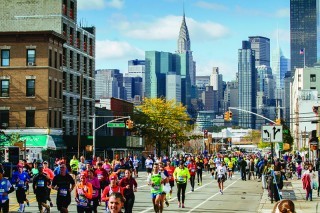
Photo: Courtesy of NYRR
We’ve curated fun facts about each of the biggest and most popular marathons this fall, and tips on how to get in next year’s race:
Chicago Marathon, Oct. 11
2014 finishers: 40,595
What to expect this year: A year after her historic 1984 Olympic Marathon win in Los Angeles, Joan Benoit Samuelson established a new course and American record at the Chicago Marathon in 2:21:21, which stood until 2006 when Deena Kastor set a new American record at the London Marathon. This year, Samuelson, 58, is challenging herself to run within 30 minutes of her 1985 Chicago Marathon finishing time, and Kastor, 42, hopes to break the women’s American masters record of 2:28:40.
Did you know? This year the Chicago Marathon became the largest certified sustainable running event in the world. With participant T-shirts made from 100 percent recycled polyester fibers and more than 60 volunteers overseeing trash collection at the event, the race received Silver Level Certification from the Council of Responsible Sport.
How to get in: Although general registration closed in the spring, the opportunity to run for an official race charity or with an international tour partner was still open as of mid-August. A two-part registration for time-qualified runners and lottery applicants opens in mid-April for the 2016 race.
The post 2015 Fall Marathon Preview appeared first on Competitor.com.
Country Music Marathon Re-Brands as Rock ‘n’ Roll Nashville
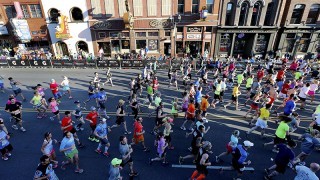
Photo: Donn Jones
After 16 years known as the Country Music Marathon, race organizers this week announced a name change—it’s now the St. Jude Rock ‘n’ Roll Nashville Marathon and 1/2 Marathon.
The change was made in an effort to allow for “a broader integration of music.” While country music is undoubtedly a staple of Nashville, it’s not all that makes up “Music City.”
“Nashville grew from a foundation built on music, and while country music is a pivotal piece of that, it’s not the only genre that defines Music City,” Josh Furlow, President of Competitor Group, which runs the Rock ‘n’ Roll Marathon Series, said in a release. “The rock and roll genre roots itself in a spectrum of music styles including bluegrass, jazz, folk, soul and of course country. Our goal is to celebrate Nashville as a destination for live music and running by linking the historical race with the power of the Rock ‘n’ Roll Marathon brand.”
Besides the re-branding, not much will change with the popular race. The course will once again start in downtown Nashville on Broadway, travel through well-known Nashville landmarks like Belmont University, the Tennessee State Capitol building, Shelby Park and the Cumberland River, before finishing at Nissan Stadium (home of the NFL’s Tennessee Titans).
St. Jude Children’s Research Hospital will return as the title partner and official charity of Rock ‘n’ Roll Nashville. The 2016 race will take place on Saturday, April 30th.
RELATED: Photos: Runners Take Over the Streets of Nashville
The post Country Music Marathon Re-Brands as Rock ‘n’ Roll Nashville appeared first on Competitor.com.
7 Must-Do Mile Road Races
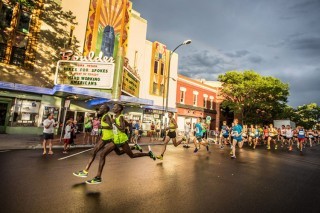
The rallying cry among some in the running world is to “Bring back the mile!” And they’re not just talking about the track.
Mile road races are a great way to see just how fast you are, and there are several across the country that offer fast courses, scenery, raucous crowds and more.
Whether you want to ease into road racing gently or just want to hammer it for 5,280 feet, these races across the U.S. give you the opportunity to go hard in the classic race distance:
RELATED: How a Mile Race Can Help Boost Enthusiasm in Running
Photo Gallery
1 of {count}
Back to Start
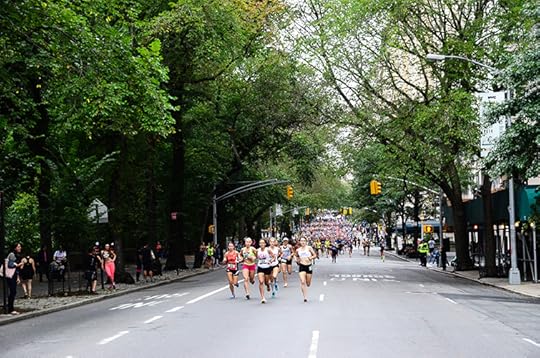
Fifth Avenue Mile
One of the jewels of the New York Roadrunners schedule, The Fifth Avenue Mile in September covers 20 blocks of the iconic street bordering the east side of Central Park in New York City. It starts near East 80th street and finishes near East 60th street. The course is a slight downhill the first and third quarter-miles, a slight uphill the second quarter mile, and flat the last quarter mile. The professional races attract big names and in 2015 was televised in ESPN2. In all, more than 6,000 runners participate. (Photo: Courtesy NYRR)
View Larger Image
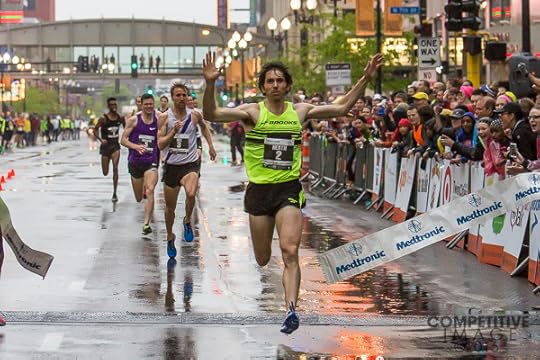
Medtronic Twin Cities 1 Mile
A fast mile on 12 city blocks in downtown Minneapolis, this race is typically on a weeknight in May and doubles as the USATF 1-mile road championship—which attracts the best mile road racers in the country among the 2,500 total participants. The point-to-point race travels through a lively part of downtown before finishing at the Hennepin Avenue Theater District. (Photo: Paul Phillips/Competitive Image)
View Larger Image
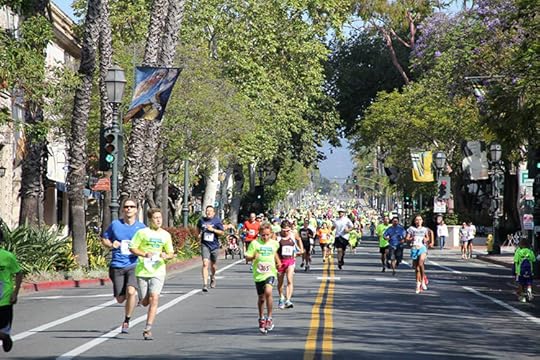
Hoka One One State Street Mile
Run every June in Santa Barbara, Calif., this race is a gradual downhill mile through downtown Santa Barbara with no turns—a straight shot from start to finish. This year, four runners ran a sub-4-minute mile. Even more impressive was the dog mile, won by Josh Helton and Bro (a lab/pit bull mix) in a blazing 4:15! (Photo: State Street Mile Facebook page)
View Larger Image
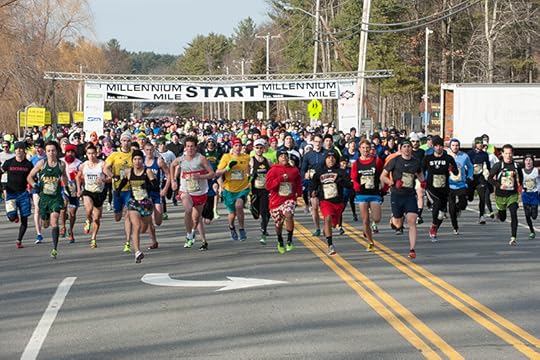
Millennium Mile
A point-to-point, downhill mile run on New Years Day in Londonderry, N.H., this is a great way to get the year started with a quick race. Despite the cold New England temperatures in January, fast times are still recorded among the 1,500 participants —two runners in 2014 ran a 3:58. (Photo: Millennium Running)
View Larger Image
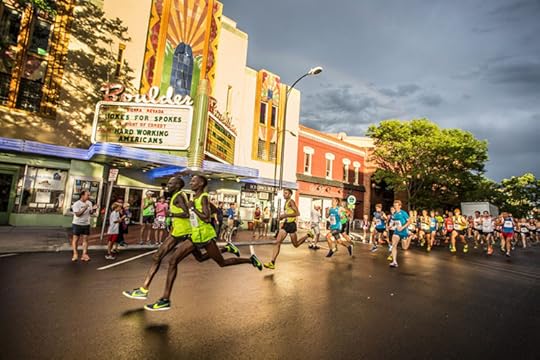
Pearl Street Mile
A quick exploration of Boulder’s famed Pearl Street area, this out-and-back course starts at 14th street near the Pearl Street Mall and makes its way down the lively street before shooting north to Spruce Street and heading back toward the start. As Boulder is the home of many great endurance athletes, the elite fields are often competitive. (Photo: Flatirons Running Events)
View Larger Image
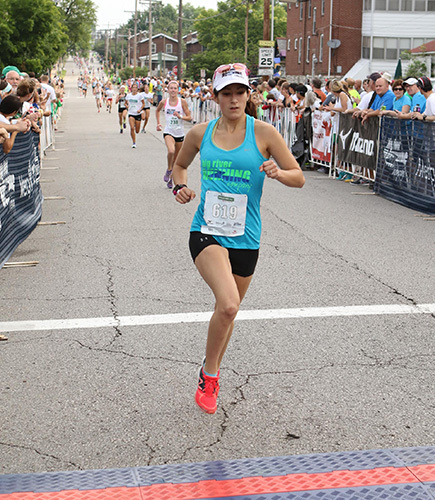
Macklind Mile
Billed as St. Louis’ fastest mile, the downhill Macklind Mile welcomes more than 1,400 runners to Macklind Avenue every June. This family friendly event has a wave for all abilities. Walkers, strollers and even pets are welcome in the recreational wave. Then competitive and elite racers head out before the big finale: the Kids Quarter Mile Dash. (Photo: Macklind Mile)
View Larger Image
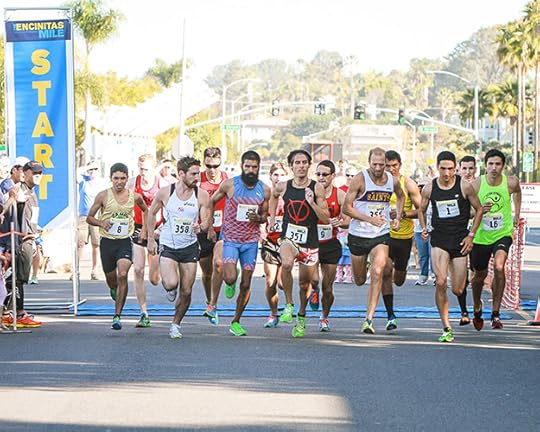
Encinitas Mile
Run each March in the coastal city just north of San Diego, the Encinitas Mile is an out-and-back course along a scenic stretch of Vulcan Avenue near the Pacific Ocean. Along with the elite heats, there are open and masters heats, a kids mile and even a dog mile (which was won this year by Thomas Whitcomb and his dog Domino in 4:50).
Related Galleries
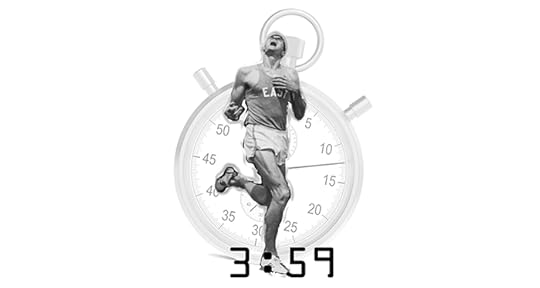
Jim Ryun Festival Of Miles: June 5, 2014
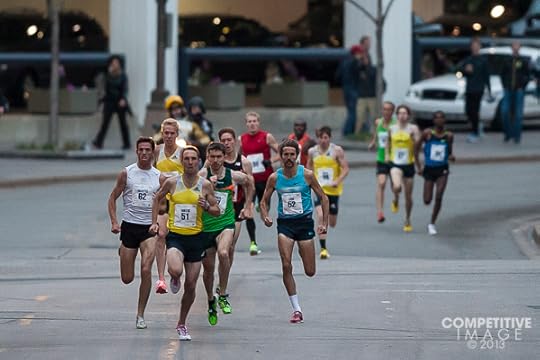
Photos: Medtronic Twin Cities 1 Mile
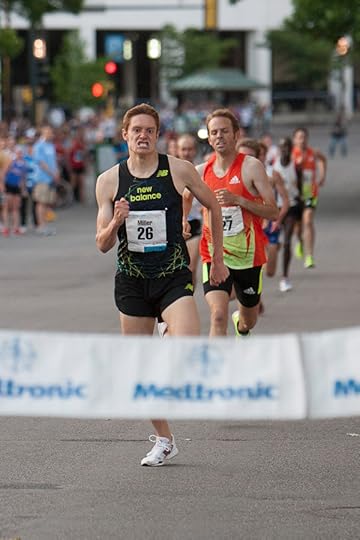
Photos: USA Road Mile Championships

More Galleries
The post 7 Must-Do Mile Road Races appeared first on Competitor.com.
Is a Solution to Cramping Coming Soon?
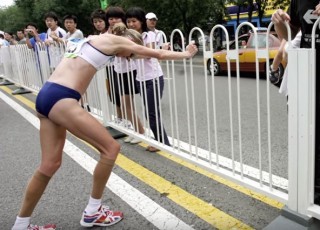
As a running coach, sports nutritionist, and author of several books for runners, I often hear from runners who are looking for help in overcoming problems that are impeding their progress. Among the most frustrating of these problems are exercise-associated muscle cramps.
A typical case is Cathy, a 55-year-old ultra-runner from Northern California who contacted me with a desperate plea for aid with her cramping situation. “I experience painful, sometimes debilitating calf cramps after about mile 15,” she explained in her email. Cathy listed the many measures she had tried to keep the cramps from returning. These included drinking more fluid and ingesting salt tablets, taking a daily vitamin and mineral supplement, rubbing magnesium cream on her legs, and wearing compression stockings. Nothing worked.
In my reply, I told Cathy that I wasn’t surprised these measures had not worked. Most of them were based on the widespread belief that exercise-associated muscle cramps are caused by dehydration and/or by the loss of important electrolyte minerals such as sodium and potassium through perspiration. If dehydration or electrolyte depletion were the cause, then replenishment would prevent muscle cramps from occurring in everyone. For most, it does not.
When runners like Cathy discover for themselves that hydration, electrolytes, and other measures don’t prevent muscle cramps, they begin to look elsewhere for a solution. They may try stretching more to make the muscles looser, training more in case lack of fitness is the culprit, or wearing compression stockings because, well, why not? But these measures usually don’t work any better.
One thing that makes cramping so frustrating for runners is its psychological dimension. Not all runners experience muscle cramps as often or as severely as Cathy does. Studies have shown that some are especially susceptible to the problem. When such runners find that nothing they try is effective in reducing their cramping risk, and that many of their competitors are not limited in the same way, they begin to think something is wrong with them. Their confidence takes a nosedive.
Training and racing without confidence is bad for performance. So is training and racing in a state of fear; and frequent crampers are often saddled with fear of bodily mutiny, especially in competition. “At the start of every race, I pray for no muscle cramps,” Cathy told me in her email.
I’ve always dreaded receiving such messages because there was almost nothing I could offer runners in Cathy’s position. Fortunately, this is about to change. New research has identified the true cause of exercise-associated muscle cramps and led to a promising new solution.
One of the leaders in neuroscience is Dr. Rod MacKinnon, a Nobel Prize-winner and an avid sea kayaker who can relate to athletes like Cathy on an experiential level. MacKinnon became interested in finding a reliable way to prevent muscle cramps when a cramping episode ruined one of his sea kayaking adventures even though, like Cathy, he thought he had done everything possible to avoid the problem.
MacKinnon’s subsequent investigations led him to the realization that muscles cramp during exercise when fatigue causes the nerve that delivers movement commands from the brain to a muscle to become hyper-excited, sending the muscle into involuntary contraction. It so happened that MacKinnon’s Nobel Prize was awarded for work he had done on ion channels, which play a key role in the transmitting of movement commands sent through the nervous system into actual muscle contractions.
Based on his knowledge of ion channels, MacKinnon suspected that a nutritional intervention designed to stimulate sensory fibers in just the right way could prevent the motor nerves from becoming hyper-excited and greatly reduce the risk of cramping. Fortunately, a number of compounds that occur naturally in some foods are known to provide this type of stimulation. In collaboration with Bruce Bean, a neurobiologist at Harvard University, MacKinnon developed a formulation—essentially the first nutritional beverage for neuromuscular performance—and began testing it.
These early tests have been encouraging. In one of them, a small amount of the beverage was found to slash the occurrence of exercise-associated muscle cramps in half. That’s enough of a difference to restore confidence to cramp-prone runners and enable them to train and race without fear.
Consumer products that deliver this formulation will be available to runners in the first half of 2016. I look forward to the fast-approaching day when I can offer a real solution to men and women who reach out to me for help with their cramping woes.
* * *
#ITSTHENERVE is the codename for the first scientifically-proven formula to treat and prevent muscle cramps. Developed by a Nobel Prize-winning neuroscientist, this spicy proprietary blend of ingredients takes athletes beyond the traditional mindset that exercise-related cramps are caused by a problem with the muscle. Instead, the scientific breakthrough reveals the real culprit: the nerve. To learn more about, visit www.itsthenerve.com or join in on the conversation by following #itsthenerve on Twitter, Instagram and Facebook.

The post Is a Solution to Cramping Coming Soon? appeared first on Competitor.com.
September 14, 2015
Coach Culpepper: What I Learned From Meb
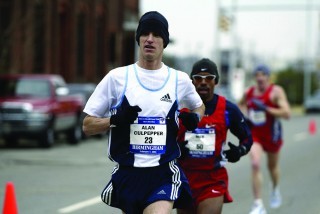
Photo: Photorun.net
It’s safe to say that Meb Keflezighi has accomplished what most athletes can only dream of: a silver medal in the Olympic marathon, and wins at both the New York City and Boston marathons. He is most certainly one of America’s all-time greatest runners.
Meb and I competed together on two Olympic teams: Sydney in 2000 and Athens in 2004. Without question, Meb truly pushed me to a higher level and helped me get the most out of myself. My best and most significant performances almost always happened when Meb was in the same race.
While Meb and I have very different backgrounds, physiological talents and approaches to training, I learned several important things from him that will help you as well.
Little Things Matter
Meb is the master of the little things. I’ve never been around another athlete who was so diligent about his stretching, drills, cross-training, diet and sleep. All these areas affect your training and ultimately your performance. Meb is just as committed to the small details as he is to hard intervals or long runs. “Everything matters” is the type of mantra he professes and he is not going to leave something simple to chance when performances come down to seconds.
Don’t Stress
Meb also masters his stress levels. I’ve yet to see him get frazzled or unnecessarily stressed, whether it’s travel issues, missed flights, lost bags or poor weather conditions. He does not let things out of his control derail his focus. Instead, he remains calm, which allows him to stay singularly focused on those aspects within his control and not get distracted by outside influences.
Don’t limit yourself
Above all else, what I marvel at about Meb is his belief in himself. In Athens, Meb wholeheartedly believed he could win a medal. If I’m being honest, I did not, and, looking back, that is disappointing. Meb went on to win silver and I finished 12th. At the time, I was thrilled with my performance because a month earlier I would have been happy with a top-25 placement. Meb helped me reestablish a higher level of expectation. He proved that if you dream it, you can accomplish it. Many of us limit ourselves and don’t believe we can accomplish our biggest goals, but not Meb. He believes—and his results show it.
RELATED: Coach Culpepper: What I Learned From Bob Kennedy
The post Coach Culpepper: What I Learned From Meb appeared first on Competitor.com.
How American Camille Herron Won the 2015 IAU 100K World Championships
American Camille Herron stands atop the podium at the IAU 100K World Championships on Saturday in the Netherlands. Photo: IAAF
Camillle Herron is anything but your conventional distance runner. Although she took a rather straightforward approach earlier in her career and ran a 2:37 marathon, she later became a serial marathoner who often raced twice during a weekend and sometimes in a costume. (She’s won 20 marathons in 12 different states!) That eventually led to her dabbling with ultrarunning and now, just two years later, she’s on top of the world after winning the 2015 IAU 100K World Championships in near-record time on Sept. 12 in the Netherlands. She covered the 10 x 10K-lap course in 7 hours, 8 minutes and 35 seconds, the fourth-fastest time in U.S. history, and helped lead her American teammates to the team gold. Other top U.S. women were Sarah Bard (fourth place, 7:29:01), Meghan Arbogast (17th place, 8:02:01) and Justine Morrison (29th place, 8:29:15). The U.S. men placed five runners among the top 35 and finished fourth in the team standings (Joseph Binder, 21st, 6:58:04; Matt Flaherty, 24th, 7:01:08; Chikara Omine, 26th, 7:02:14; Jim Walmsley, 28th, 7:05:19 and Nick Accardo, 34th, 7:13:22).
Herron, 33, a Skechers-sponsored athlete from Warr Acres, Okla., also works full-time as a bone imaging specialist at the University of Oklahoma Health Sciences Center. We caught up with her today, less than 24 hours after returning from her trip when the idea of being a world champion was just starting to sink in.
Congrats on your victory. How does someone win a world ultrarunning championship with just two ultra finishes under her belt?
I’m still trying to digest it all. It’s pretty crazy. I’ve had so many messages and emails. It was so overwhelming. It’s definitely the highlight of my career so far. Technically it was my fourth ultra and my third finish. To win a world championship with my third ultra finish is pretty amazing, but I think I’ve found my niche!
How and why did you decided to start running ultra-distance races?
I ran the Two Oceans Ultramarahton in South Africa in 2013. The way it happened is that I was trying to get over plantar fasciitis and I wasn’t able to do a whole lot of speed work at the time but I was still putting in pretty good mileage. We kind of thought it would be a good time to play around with racing different distances. I got recruited by the Ned Bank Running Club in Capetown, South Africa, and so I ended up making my ultra debut at the Two Oceans Ultramarathon 56K race. Everyone probably thought that being a marathoner they thought I’d go out really hard and hit the wall, but I actually went out conservative and once I tried to make up ground I couldn’t and ended up finishing 10th there. [She finished 11th place, but the lead woman was busted for doping so Herron was moved up to 10th in the final standings.]
Did your history of running two marathons in a single weekend help you adjust to ultrarunning?
Yes, I think it definitely did. I kind of made my career as being a prolific marathoner for a while. I have been running back-to-back marathons for so long I think that’s actually helped me have a pretty successful entry into the ultra world. I’m used to the intensity of the marathon and then doing that on back-to-back days and that’s really helped me adapt to pushing really as hard as I can in the ultras. I think, because of that, I realized I could race those distances—50K to 100K—like a marathoner and be OK.
At your second ultra-distance race, things didn’t go so well. What happened?
I was planning on doing the 90K Comrades Marathon and was really well trained for that last year, but then I wound up catching a virus and getting a fever a day and a half before the race. I thought I was just really badly jet-lagged. I woke up at night sweating and chilled. I didn’t feel very good in the first 10K but still wound up running pretty strong through about 83K and then just collapsed and wound up in the ER. It was a pretty traumatic first Comrades. I later learned Ann Trason also DNF’ed in her first Comrades, so I don’t feel so bad. But it was definitely a learning experience for me.
You had a 5-minute lead after 20K over Sweden’s Kajsa Berg and led by 10 minutes by 50K. How did your race play out in the Netherlands?
I knew I had a shot to go for the American record at the world championships because it was a flat and fast course, so I spent the summer mentally and physically preparing myself and telling myself I just had to go for it. And I went for it. I did my research on past races and I knew that Ann Trason had gone through halfway at 3:22 so I went into the race and ran fearlessly. Went through halfway at 3:24:40 and felt great and had a good margin over the second-place runner.
But then what happened?
I tried to take a gel at the 65K mark. I had been drinking sports drinks for the first half and was going to switch to Coke and start taking an extra gel every other lap at the 65K mark. But I had an adverse reaction when I took a Coke with a gel and I started puking. I think it was just too much sugar all at once. My body just went into overload and was rejecting what I was trying to put into it. I had never puked in a race before. I didn’t know what was going on. I went from a pretty steady pace to bending over and puking. I thought about Bob Kempainen at the 1996 Olympic Trials Marathon. I kept going and trying to take gels, but I would get nauseated and stop that and just take liquids. I was just trying to tell myself to remain calm and keep my pace. I was just trying to break it down and stay positive, but once I heard our team was winning overall I was more motivated to finish with two laps to go.
What’s next?
I’m probably not going to be racing as crazy as I have been with the marathon, but I’ve developed myself to a point where I can use marathons to train for ultras. I just committed to the U.S. 50K team that is competing in Doha at the IAU 50K World Championship in December. I think it’s going to be a pretty ridiculously good team going to Doha. I’ll probably do 1-2 races in October, then rest up for Doha. After that, I’d like to go for the Olympic “A” standard in the marathon. I’ve run 2:37:14, but I’d have to go under 2:37:00 to get the “A” standard so I might try to get that. I know what I do sounds like more than the average person, but I don’t think I’m the average person. I have a knack of running really far and really fast, so it’s normal for me to do a big race one month and then come back the next month to do another big race. Maybe I’m an exception to the rule.
How do you balance work and training?
I have amazing time management skills. I run twice a day on most days. The hardest thing for me is making sure I’m meeting my energy and hydration demands. There are times when I’m in the lab and standing and doing things and I don’t have time to think about eating, so I’ve had to be more conscious about how I’m feeling and reminding myself to take breaks and have snacks. It’s a whole body awareness to make sure you’re meeting your body’s needs. I sleep really well at night and try to get naps when I can—even 10-minute power naps during the day. I do two speed works during the week, but usually something kind of smaller and at night. I don’t like doing workouts in the morning and being rushed to get to work. I often run late at night. Sometimes this summer I was running 10 to 14 miles between 8 to 10 p.m. I’ve always been a bit of a night owl, so that works for me. I try to find a way to do it all.
What advice can you give to runners going from marathons to ultras?
I really think it’s a mistake to run crazy high mileage just because you’re running ultras. I run pretty high mileage at 120 to 130 miles per week. But when I made my ultra debut in 2013, I was trying to run even more miles and not do as many quality workouts and it actually made me feel flat with dead legs. I realized I just need to train how it’s always worked for me. And for me, that means training like a marathoner with a good mix of miles and faster workouts. That’s what keeps the pep in my legs and I’m able to a good aerobic volume while maintaining good leg speed too. The aerobic capacity is very important, but I wouldn’t overdo it and wind up with dead legs. The other thing is to run on all different distances and all different surfaces. The example that Max King and Ellie Greenwood have set—running 5Ks and 8Ks and cross country races and marathons and ultras—that’s kind of been my approach too and it really works.
The post How American Camille Herron Won the 2015 IAU 100K World Championships appeared first on Competitor.com.
Meb Keflezighi Running the 2015 New York City Marathon
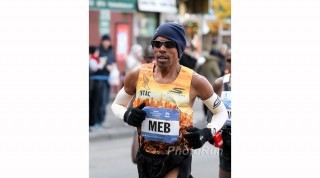
The Big Apple never gets old for Meb Keflezighi. The 40-year-old from San Diego announced over the weekend that he’ll race the New York City Marathon for the tenth time in his career on Nov. 1.
Keflezighi highlights the professional men’s field for this year’s race, and will be joined by big names such as Kenyans Wilson Kipsang and Stanley Biwott, and Ethiopians Lelisa Desisa, Gebre Gebremariam and Yemane Tsegaye. Other Americans include Nick Arciniaga—tenth at New York City last fall—and Craig Leon.
This year’s race is about 3 1/2 months before the U.S. Olympic Trials marathon in Los Angeles on Feb. 13, 2016, which Keflezighi—the defending champion—also plans on running. The quick turnaround wasn’t a factor for Keflezighi in the past—he placed sixth at the 2011 New York City Marathon, then turned around and won the 2012 Olympic Trials marathon in Houston just 69 days later.
As is often the case, this year’s race is loaded with talent. Kipsang is the defending New York City Marathon champion, winning last year’s race in 2:10:59 on a cold, blustery day. Desisa won the Boston Marathon earlier this year and Gebremariam is the 2010 New York City Marathon champion. Tsegaye finished second at both the Boston Marathon and IAAF World Championships marathon this year and is the current leader for the World Marathon Majors series.
Keflezighi—the 2009 NYC Marathon champion—has had a busy year, placing eighth at the Boston Marathon in April (2:12:42), and following that up a month later at the Rock ‘n’ Roll San Diego Half Marathon with a second-place, 1:02:29 finish. That race served as the USATF Masters national championship, and was his first race a Masters runner (he turned 40 on May 5th).
The New York City Marathon, the largest marathon in the world, starts in Staten Island and touches all five of the City’s boroughs before finishing in Manhattan’s Central Park. The race will be televised live on ESPN2.
The post Meb Keflezighi Running the 2015 New York City Marathon appeared first on Competitor.com.
September 13, 2015
Photos: 2015 NYRR 5th Avenue Mile
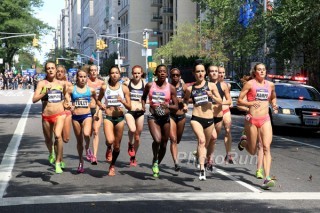
One of the premier mile road races in the U.S., the NYRR 5th Avenue Mile took place Sunday in Manhattan on Fifth Avenue, adjacent to Central Park. The race saw a couple of familiar winners—Nick Willis of New Zealand won the men’s race for the third time in 3:54.8, while American Jenny Simpson won the women’s race for the fourth time in 4:29.0.
RELATED: Simpson, Willis Win 5th Avenue Mile
Here are photos from the races, taken by PhotoRun.net:
Photo Gallery
1 of {count}
Back to Start
View Larger Image

Jonah Gorevic, an age-group record holder in the mile.
View Larger Image
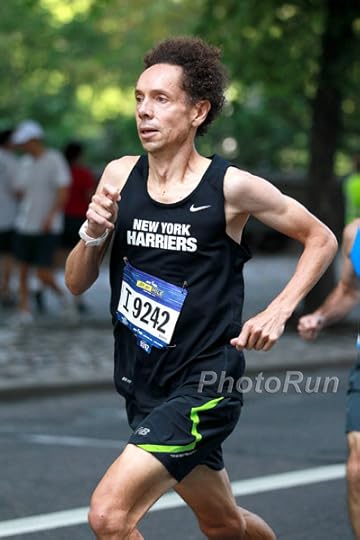
Author Malcolm Gladwell.
View Larger Image
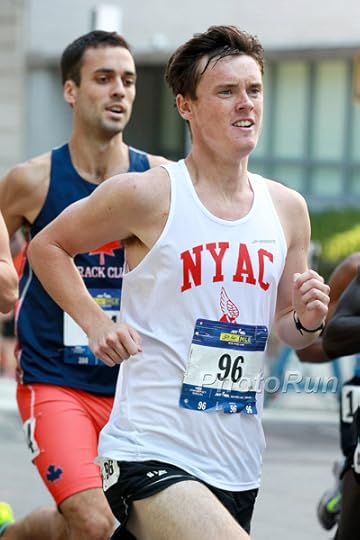
Mike Brannigan, an 18-year-old with autism who’s the Paralympic world record holder in the 1,500m.
View Larger Image
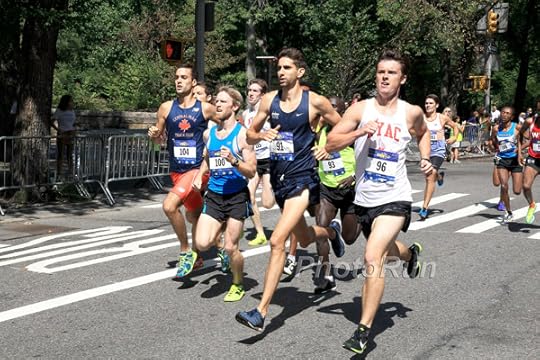
The local men's leaders.
View Larger Image
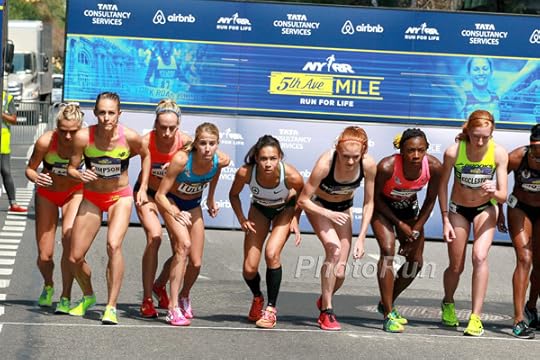
The women's start
View Larger Image

View Larger Image

Alysia Montano
View Larger Image

Shannon Rowbury.
View Larger Image
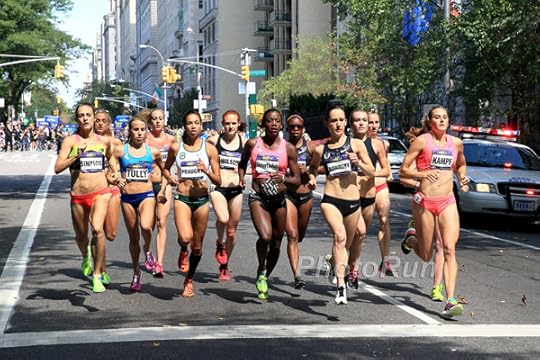
View Larger Image

Jenny Simpson
View Larger Image

Nicole Tully
View Larger Image
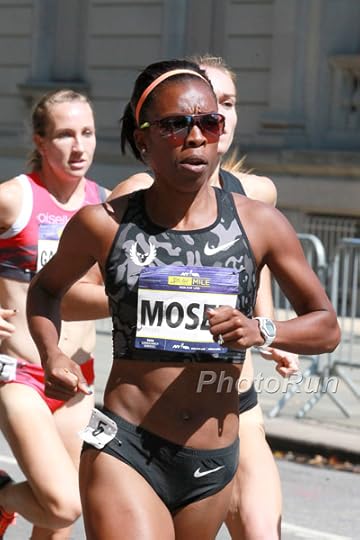
Treniere Moser
View Larger Image
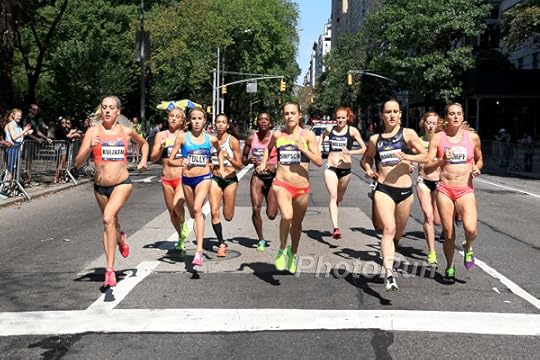
View Larger Image
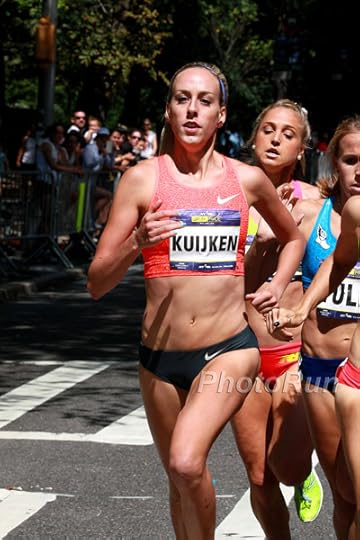
Susan Kuijken, who finished third.
View Larger Image
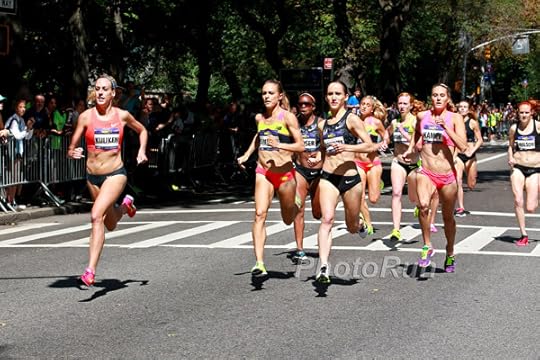
The lead pack in the women's pro race.
View Larger Image
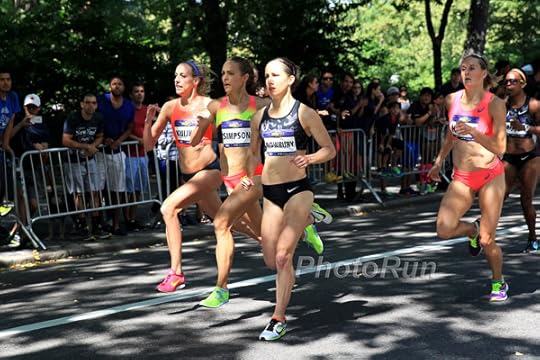
The top three approaching the finish line.
View Larger Image
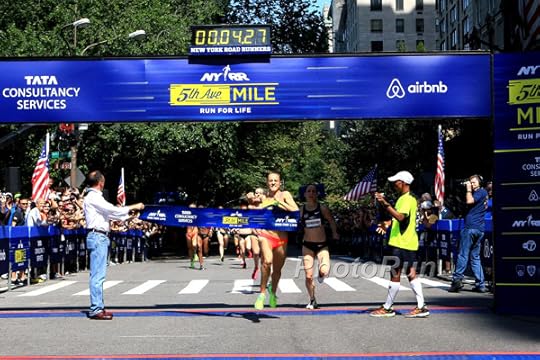
Jenny Simpson crossing the finish line
View Larger Image
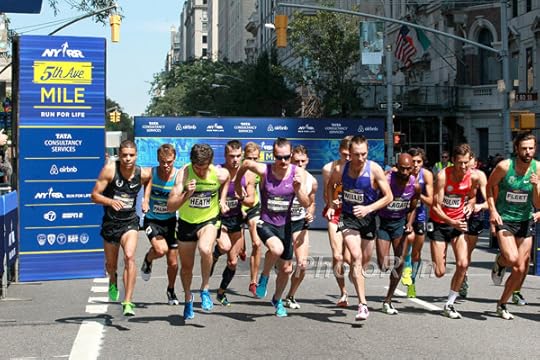
The start of the pro men's race.
View Larger Image

Matt Centrowitz
View Larger Image

The pro men's pack at 400 meters.
View Larger Image
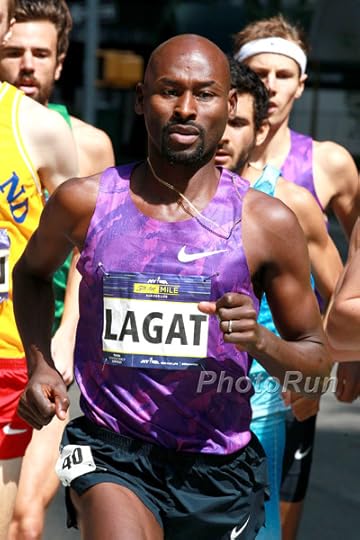
Bernard Lagat.
View Larger Image
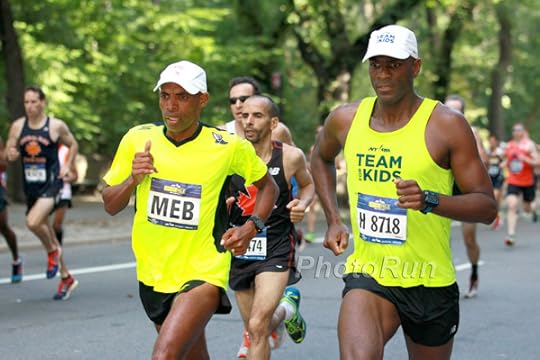
Meb Keflezighi.
View Larger Image
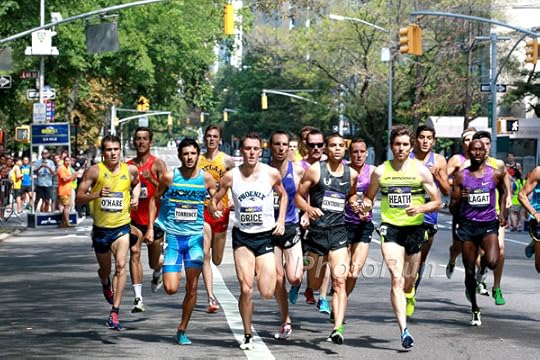
The men's leaders at 1,200 meters.
View Larger Image

Nick Willis
View Larger Image
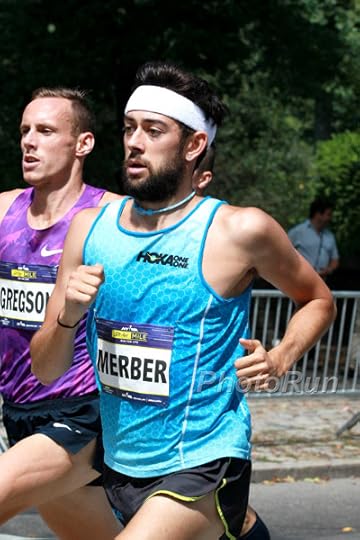
Kyle Merber.
View Larger Image
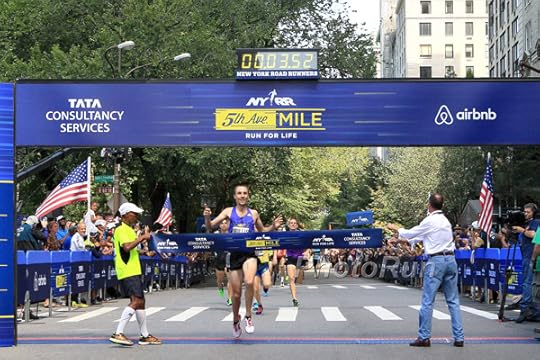
Nick Willis crossing the finish line
View Larger Image
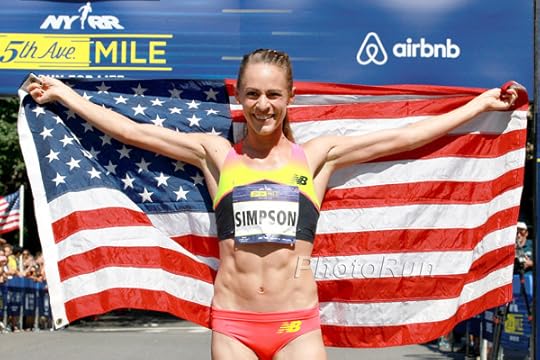
2015 Fifth Ave Mile
Jenny Simpson celebrating
View Larger Image
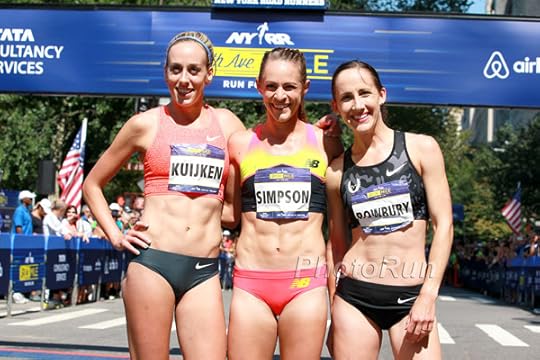
The top three women.
Related Galleries
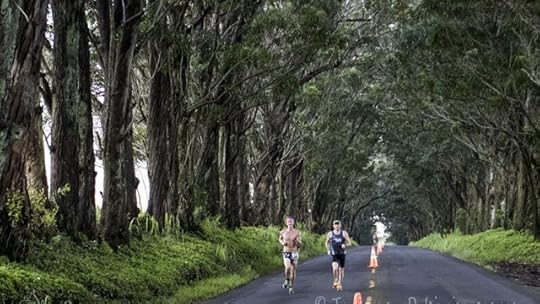
Photos: The 2015 Kauai Marathon and Half Marathon
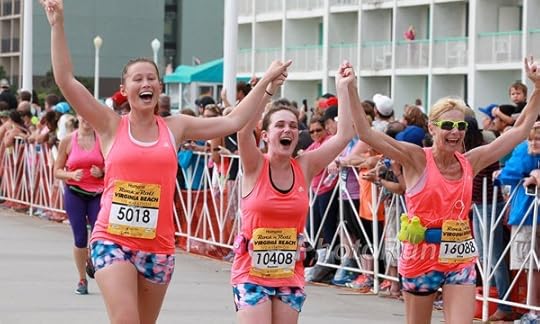
Photo Gallery: Virginia Beach Celebrates 15 Years of Rock ‘n’ Roll

Photo Gallery: Mile on the Sand

Photos: Thousands Take Part in Rock ‘n’ Roll Dublin Half Marathon

More Galleries
The post Photos: 2015 NYRR 5th Avenue Mile appeared first on Competitor.com.
8 Dry Jackets for Wet Runs
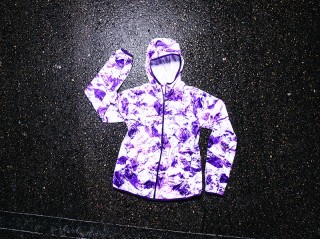
The latest jackets with wind and water protection continue to push the boundaries of purpose-driven comfort—venting sweat and blocking rain. These eight styles will keep you running in any weather, from gentle showers to dumping buckets.
Photos: Scott Draper
Photo Gallery
1 of {count}
Back to Start
View Larger Image
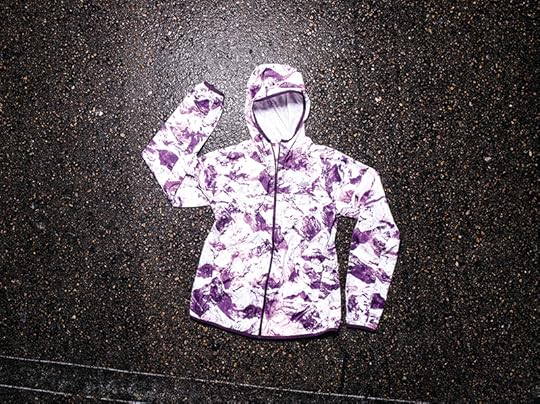
New Balance Windcheater, $80
When the weather calls for cooler temperatures, blustery winds and spitting rain, this polyester jacket has you covered. Feminine lines give it a just-right fit with room to move. Detailed finishes like zipped hand pockets, an internal media pocket and a folded hem are valuable benefits for the price.
View Larger Image

Cotopaxi Tikal Rain Shell, $139
Whether you’re running negative splits or running to the office, this waterproof jacket’s breathable, four-way stretch fabric and slim cut will keep you stylish and dry in a downpour. Taped seams and perforated underarm vents, an adjustable hood with visor and zip pockets, a feminine print on the interior and reflective accents on the exterior—pretty and practical are merged in an updated classic design.
View Larger Image

The North Face Ultra Light WR Short Sleeve, $150
For those who run hot but hate being wet, this piece is for you. The durable yet lightweight design keeps your core and shoulders dry. It even has an adjustable hood for added protection. And, while arms will get wet, they are free from the clammy shell-against-skin feeling of some rain jackets. When the clouds part, the Ultra Light tidily packs away into a self-stowing pocket.
View Larger Image
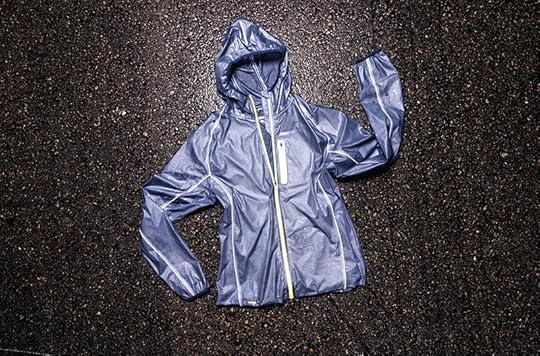
Saucony Exo Jacket, $140
A slim fit, drop tail and generous hood provide the functional framework for a wind- and waterproof shell, complete with taped and sealed seams. Stretchy fabric and an interior that feels dry against the skin are what make this the jacket to grab for extended comfort in uncomfortable conditions.
View Larger Image
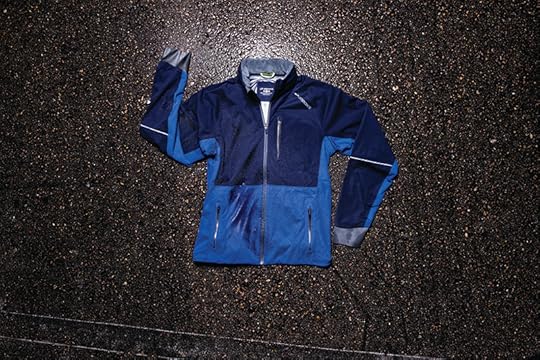
Brooks Seattle Shell, $260
Cold and rainy doesn’t have to mean it’s time to hit the treadmill, especially with the latest waterproof and windproof running jacket from Brooks. Seam-sealed and breathable, four-way stretch don’t always play well together, but when they do, the combination makes for a chance to enjoy an invigorating running experience in foul weather.
View Larger Image
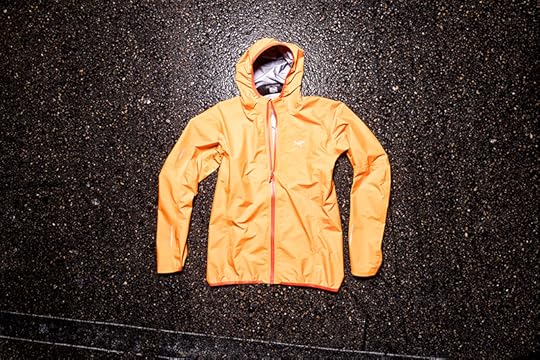
Arc’teryx Norvan Jacket, $325
The weather armor properties of this mountain training jacket help regulate temperature and moisture, even if you decide you want to run uphill in a sleet storm. Strategically placed vents that enhance air flow make this a jacket to grab when heading out for tough trail runs in fickle mountain conditions.
View Larger Image
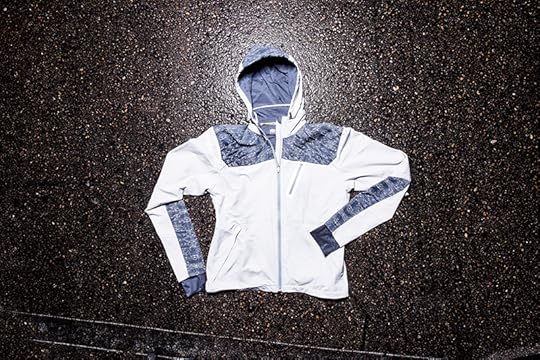
Sugoi Ignite Shelter Jacket, $170
Get cozy on your run in this warm softshell for damp days. The four-way stretch fabric is wind- and water-resistant and the jacket’s hood is lined with soft jersey material for extra warmth and comfort. It works equally well as an outer layer for fall running, or as an active mid-layer for the cold winter days to come.
View Larger Image
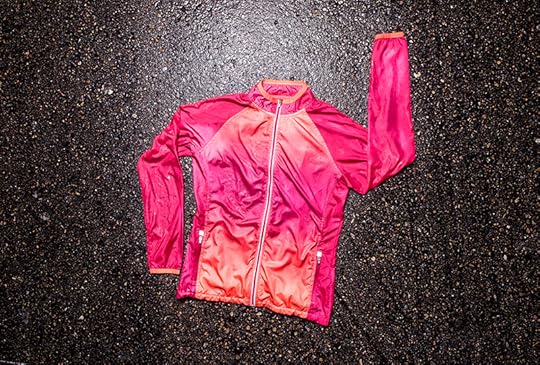
Zoot Wind Swell Jacket, $85
This sleek jacket turns you into your very own beacon of brightness on damp and dreary days. In addition to being wind and water resistant, it has front and back vents to release heat, as well as UPF 50 to protect you when the sun is shining. Front zip pockets and a rear stuff pocket give the Wind Swell just the edge to make it an essential fall training piece.
Related Galleries

Closer Look: On-the-Go Hydration Gear
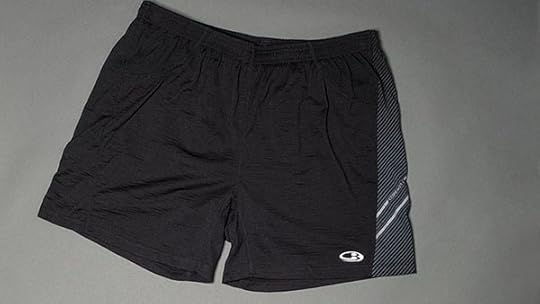
Running Clothes Featuring Merino Wool
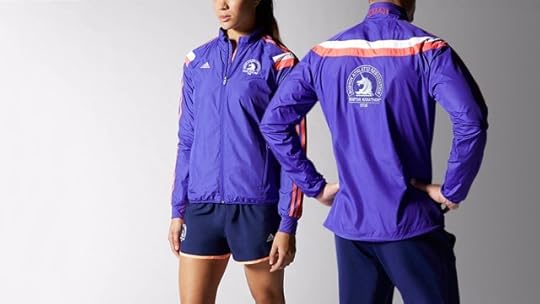
Sneak Peek: Adidas Releases 2015 Boston Marathon Apparel

Running Apparel: How to Care for It and When to Ditch It

More Galleries
The post 8 Dry Jackets for Wet Runs appeared first on Competitor.com.
Jenny Simpson, Nick Willis Win 2015 5th Avenue Mile
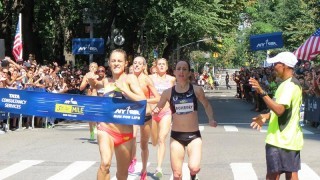
Jenny Simpson eked out the victory over a strong field. (Photo: Jane Monti/Race Results Weekly)
(c) 2015 Race Results Weekly, all rights reserved. Used with permission.
NEW YORK —Experience reigned supreme here at the 35th running of the NYRR 5th Avenue Mile, as American Jenny Simpson and New Zealander Nick Willis claimed their fourth and third titles, respectively. Both used late kicks to separate from their competition, breaking the tape in 4:29.0 and 3:54.8, respectively.
After a long season that saw Simpson win the U.S. 1500m national title, narrowly miss setting an American 1500m record in Monaco, and finish a devastating 11th at the IAAF World Championships with only one shoe and a badly bruised left foot, the 29-year-old wanted to conclude her season with a resounding victory here in Manhattan. Having raced two days ago in Brussels, Simpson came to New York a bit fatigued but with more intrinsic motivation than anyone else in the field.
“Anything less than winning here was going to be a disappointment for me, personally, so I said the year would be complete when I really put my nose down and get this one done,” Simpson told members of the media.
RELATED: Photos: 2015 5th Avenue Mile
On the start line, Simpson and fellow pre-race favorite Shannon Rowbury were lined up on direct opposite sides of the road. Little did anyone know that their starting spots nearly played a key factor in the race’s outcome: at the start, Rowbury—the American 1500m record holder—narrowly avoided disaster as the television motorcycle stalled at the start. Having to quickly dart to her left to avoid a collision, Rowbury went to the front and was joined by Simpson and Heather Kampf.
Through the quarter mile in 68 seconds and halfway in 2:20.3, the entire field was cautiously preparing for a fast second half. First across halfway was 800m specialist Alysia Montano, setting herself up for a $1,000 prize if she could dip under 4:32 at the finish.
As soon as the group began their slightly downhill charge for the stripe, Simpson and Rowbury established a modest gap up front. Just behind were Susan Kuijken, to their right and Kampf, to their left, battling for podium spots as well. Simpson’s strategy coming in was to wait as long as possible before kicking, and that’s what she did.
With the crowd’s cheers growing, Simpson found an added gear that would carry her through the finish first in 4:29.0, a mere three-tenths of a second up on Rowbury. With her win, Simpson becomes the only woman in event history to earn four titles (Spain’s Isaac Viciosa is the only male to win four, taking home crowns in four successive years from 1995 through 1998).
“It just felt good the last 15 seconds knowing I was going to be able to grind to the win,” said Simpson, who picked up a $5,000 winner’s check. “Winning here was really important to me.”
Simpson’s victory was even more meaningful considering she battled rival Rowbury for supremacy. The pair have raced neck and neck all season long, finishing close week in and week out. Rowbury is a two-time champion of this race.
“I hope it’s been fun for everyone [to watch] because it’s really hard, really stressful, but I think it’s good for our sport to have us facing every weekend and battling it out,” said Simpson, noting how she’s always cherished one-on-one rivalries against other athletes. In college she always would go up against Sally Kipyego, and when she specialized in the steeplechase it was Anna Willard. Now it is Rowbury. “I think it’s good, especially for a race on ESPN. If they are going to put this on television like that, what a great story to bring to the starting line. I hope everyone enjoyed it because it was stressful for me!”
“Jenny got me at the end today,” said Rowbury, sporting her signature pink lipstick. “I figured it would be the two of us battling for the win and that’s how it turned out… If I look at the sum of the season, it’s been a big plus!”
While Simpson and Rowbury were happy with their races, their weekends paled in comparison to third place finisher Kuijken. Her podium spot was only the cherry on top to a memorable weekend. After arriving in New York, the Dutchwoman was running in Central Park with her boyfriend Andrew Krumins when they paused by the iconic reservoir. There he proposed to Kuijken, who said yes.
“It was a beautiful perfect setting and I was doing what I love to do most, running, so I couldn’t think of a better time to do this!” Kuijken told Race Results Weekly, smiling from ear to ear. “Now we get to celebrate here in New York!”
Kampf finished fourth in 4:30.2. Rowbury also won the halfway prime (Montano, who led at 880 yards, wound up 11th in 4:35.4). Kampf was followed by Heather Wilson (4:31.7) and Treniere Moser (4:31.9).
Willis Caps Off Season With Big Victory
Having already run here four times and taken home the win in 2008 and 2013, Nick Willis was considered a seasoned veteran in the men’s field. Well aware of the race’s slightly uphill profile through halfway, the Kiwi sat back comfortably and waited until late to make his winning move.
With the field eight abreast approaching 880 yards, it was Americans Ford Palmer and Riley Masters surging hard aiming to reach the halfway point first. Palmer, the former football player, wound up leading in 2:04, though would have to break four minutes in order to take home the prime bonus (he did not, finishing in 4:00.9).
The field would fall back into form through the kilometer, a giant blur of multi-colored singlets taking up one and a half lanes of the roadway.
While a number of athletes in the field had been racing the European circuit in recent weeks, Willis was back home in Michigan. He had returned to the mitten state after finishing sixth at the IAAF World Championships, a frustrating performance for the 2008 Olympic silver medalist. After acing a grueling 2×800, 2×400, 600 workout on Wednesday, he came here with confidence in his kick.
“I knew whatever the pace was I should be ready for whatever,” he told Race Results Weekly. “You’re never licking your chops [though] when Matt Centrowitz is in the race. He’s got a lot of very, very good credentials. Often it comes down to who’s more committed at this stage of the season, and he’s raced a lot this year and I’ve only had three or four races.”
Down the final stretch, Willis exemplified what a world class surge looks like leaving Centrowitz, past champion Bernard Lagat, and the rest of the field in his wake. Taking over the pole with a vengeance, he’d extend his lead and raise his arms to pump up the crowd approaching the finish. Breaking the tape in 3:54.8, Willis tied running legend Peter Elliott with three victories over the iconic Museum Mile stretch.
“It’s a really nice way to finish the season,” said Willis who lost to Centrowitz at New York’s other iconic mile, the NYRR Wanamaker Mile at the Millrose Games, last February. “I was quite dismayed after what happened in Beijing, so I wanted to make sure I hung the shoes up for the year with a high.”
Second went to Britain’s Chris O’Hare (3:55.9), with Norway’s Henrik Ingebrigtsen and American Centrowitz a step behind (both timed 3:56.1, with third place ultimately going to Ingebrigtsen). Australia’s Ryan Gregson rounded out the top five in 3:56.2.
After two tough races this week–a DNF in Zagreb and a 10th place, 3:43.97 showing in Brussels—O’Hare gained a bit of momentum to take into the offseason.
“My other two races were pretty dreadful. Today I felt terrible at the start but I was like ‘just get in the mix’ and instincts take over,” he said. “Everybody’s waiting, waiting, waiting and I wanted to make sure I got a jump in… It’s a long last 50 meters though.”
A bit of drama played out regarding the men’s halfway prime, as both Palmer and Masters didn’t dip under the required four minutes (4:00.9 and 4:00.2, respectively). Next up would be Christian Soratos, who missed it by the slimmest of margins hitting 4:00.0 on the dot. Therefore, the $1000 went to Garrett Heath, eighth overall in 3:57.3.
Earlier in the day, Reed Connor of the New Jersey/New York Track Club and Valentine Kibet of Westchester TC claimed NYRR Road Mile Championship titles in 4:06.2 and 4:47.6, respectively. Former high school standout Mikey Brannigan placed fifth in the men’s race, clocking 4:09.9. Also in that race was Jenny Simpson’s husband, Jason, who finished 14th in 4:13.7.
A vast majority of the elites racing today are now done for the season, and will begin their time away from running starting today.
The post Jenny Simpson, Nick Willis Win 2015 5th Avenue Mile appeared first on Competitor.com.
Ryan Hall's Blog
- Ryan Hall's profile
- 21 followers



